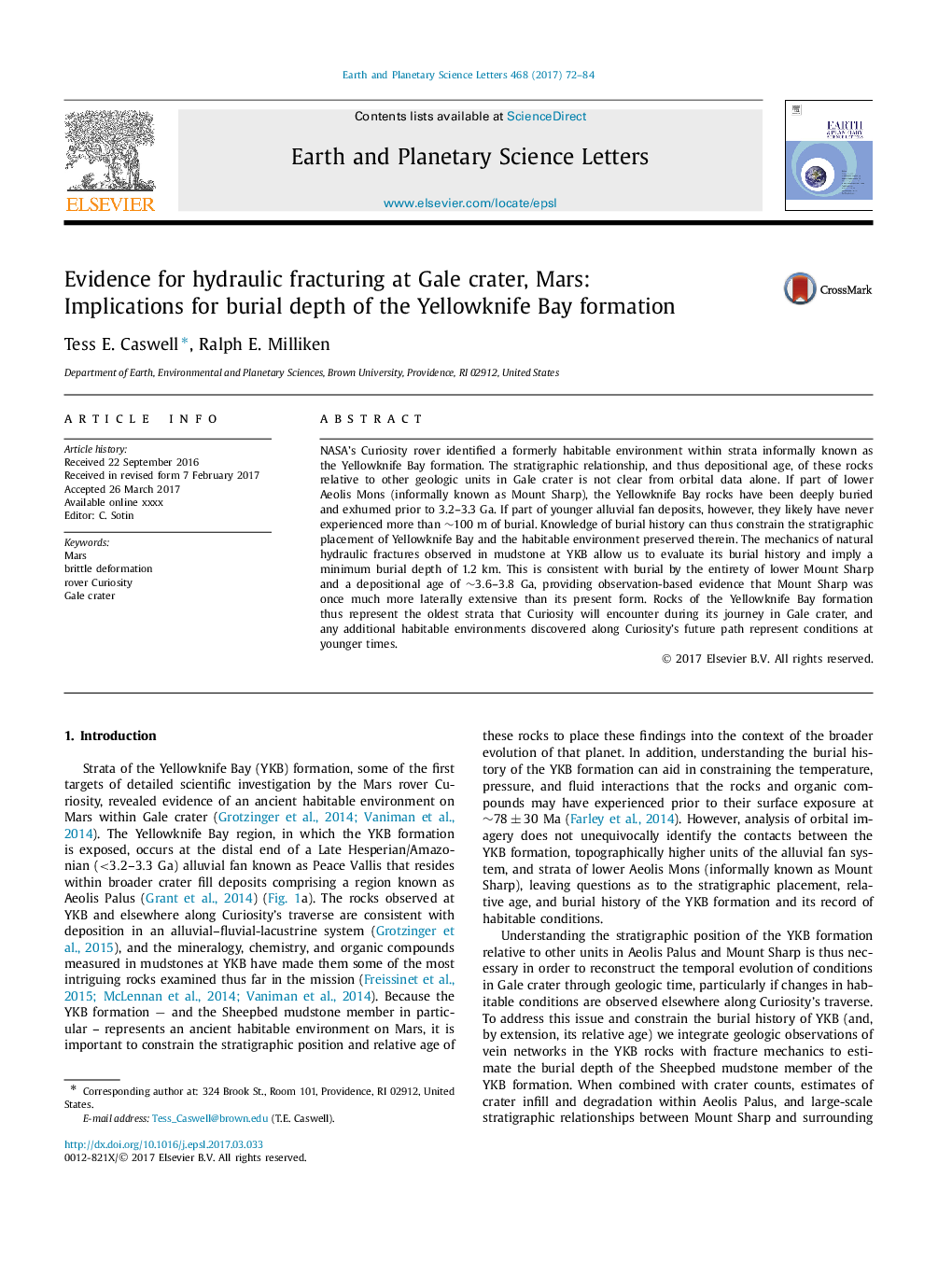| کد مقاله | کد نشریه | سال انتشار | مقاله انگلیسی | نسخه تمام متن |
|---|---|---|---|---|
| 5779840 | 1634688 | 2017 | 13 صفحه PDF | دانلود رایگان |
عنوان انگلیسی مقاله ISI
Evidence for hydraulic fracturing at Gale crater, Mars: Implications for burial depth of the Yellowknife Bay formation
دانلود مقاله + سفارش ترجمه
دانلود مقاله ISI انگلیسی
رایگان برای ایرانیان
موضوعات مرتبط
مهندسی و علوم پایه
علوم زمین و سیارات
علوم زمین و سیاره ای (عمومی)
پیش نمایش صفحه اول مقاله

چکیده انگلیسی
NASA's Curiosity rover identified a formerly habitable environment within strata informally known as the Yellowknife Bay formation. The stratigraphic relationship, and thus depositional age, of these rocks relative to other geologic units in Gale crater is not clear from orbital data alone. If part of lower Aeolis Mons (informally known as Mount Sharp), the Yellowknife Bay rocks have been deeply buried and exhumed prior to 3.2-3.3 Ga. If part of younger alluvial fan deposits, however, they likely have never experienced more than â¼100 m of burial. Knowledge of burial history can thus constrain the stratigraphic placement of Yellowknife Bay and the habitable environment preserved therein. The mechanics of natural hydraulic fractures observed in mudstone at YKB allow us to evaluate its burial history and imply a minimum burial depth of 1.2 km. This is consistent with burial by the entirety of lower Mount Sharp and a depositional age of â¼3.6-3.8 Ga, providing observation-based evidence that Mount Sharp was once much more laterally extensive than its present form. Rocks of the Yellowknife Bay formation thus represent the oldest strata that Curiosity will encounter during its journey in Gale crater, and any additional habitable environments discovered along Curiosity's future path represent conditions at younger times.
ناشر
Database: Elsevier - ScienceDirect (ساینس دایرکت)
Journal: Earth and Planetary Science Letters - Volume 468, 15 June 2017, Pages 72-84
Journal: Earth and Planetary Science Letters - Volume 468, 15 June 2017, Pages 72-84
نویسندگان
Tess E. Caswell, Ralph E. Milliken,